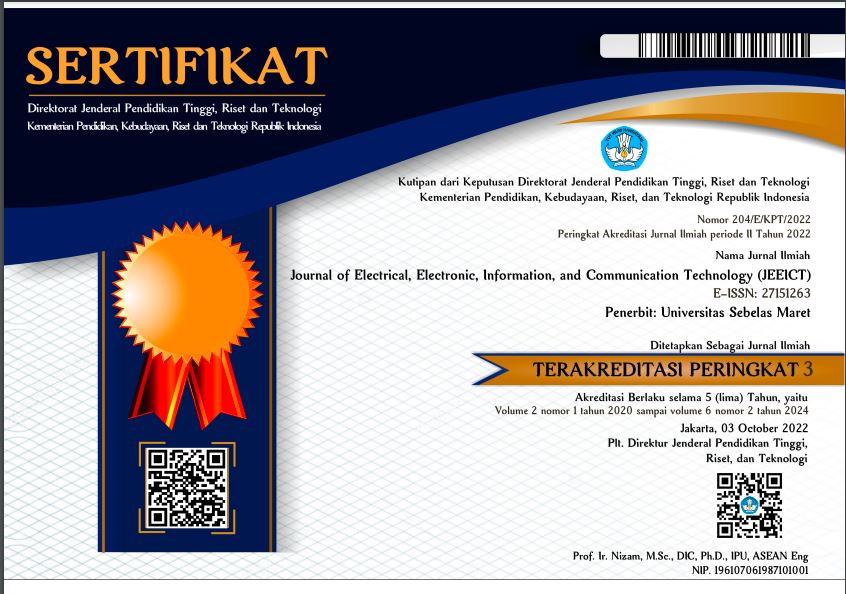REGENERATIVE BRAKING MONITORING SYSTEM OF ELECTRIC VEHICLE
Abstract
Full Text:
PDFReferences
D. Halliday, R. Resnick, and J. Walker, Fundamentals of Physics, 9th Editio. United States of America: John Wiley & Sons, Inc., 2011.
D. K. Neal, “Angular Velocity vs. Linear Velocity,” Bowling Green, KY, 117.
E. A. Grunditz and T. Thiringer, “Performance Analysis of Current BEVs Based On A Comprehensive Review of Specifications,” IEEE Trans. Transp. Electrif., vol. 2, no. 3, pp. 270–289, 2016.
F. Un-Noor, S. Padmanaban, L. Mihet-Popa, M. N. Mollah, and E. Hossain, “A comprehensive study of key electric vehicle (EV) components, technologies, challenges, impacts, and future direction of development,” Energies, vol. 10, no. 8, pp. 1–82, 2017.
Henry, “ACS758 Arduino Current Sensor Tutorial,” Henry’s Bench, 2015. [Online]. Available: http://henrysbench.capnfatz.com/henrys-bench/arduino-current-measurements/acs758-arduino-current-sensor-tutorial/. [Accessed: 17-May-2019].
J. Fraden, Handbook of Modern Sensors, Fifth Ed. San Diego, CA, USA: Springer, 2015.
K. Bahrudin, “Sistem Transmisi Pada Mobil Golf Listrik,” Universitas Sebelas Maret, 2018.
M. Ehsani, Y. Gao, S. E. Gay, and A. Emadi, Modern Electric, Hybrid Electric, and Fuel Cell Vehicles. CRC PRESS, 1385.
Opto, “RPM Measurement Techniques,” Temecula, CA, Form 1784-160609, 2016.
R. A. Serway and J. W. J. Jr., Physics for Scientists and Engineers with Modern Physics, 9th ed. Boston, MA: Brooks/Cole Cengage Learning, 2014.
Y. Gao, L. Chen, and M. Ehsani, “Investigation of the Effectiveness of Regenerative Braking for EV and HEV.” SAE International, 1999.
Y. Liklikwatil, Mesin-mesin Listrik, Ed.1. Yogyakarta: Deepublish, 2014.
Refbacks
- There are currently no refbacks.







